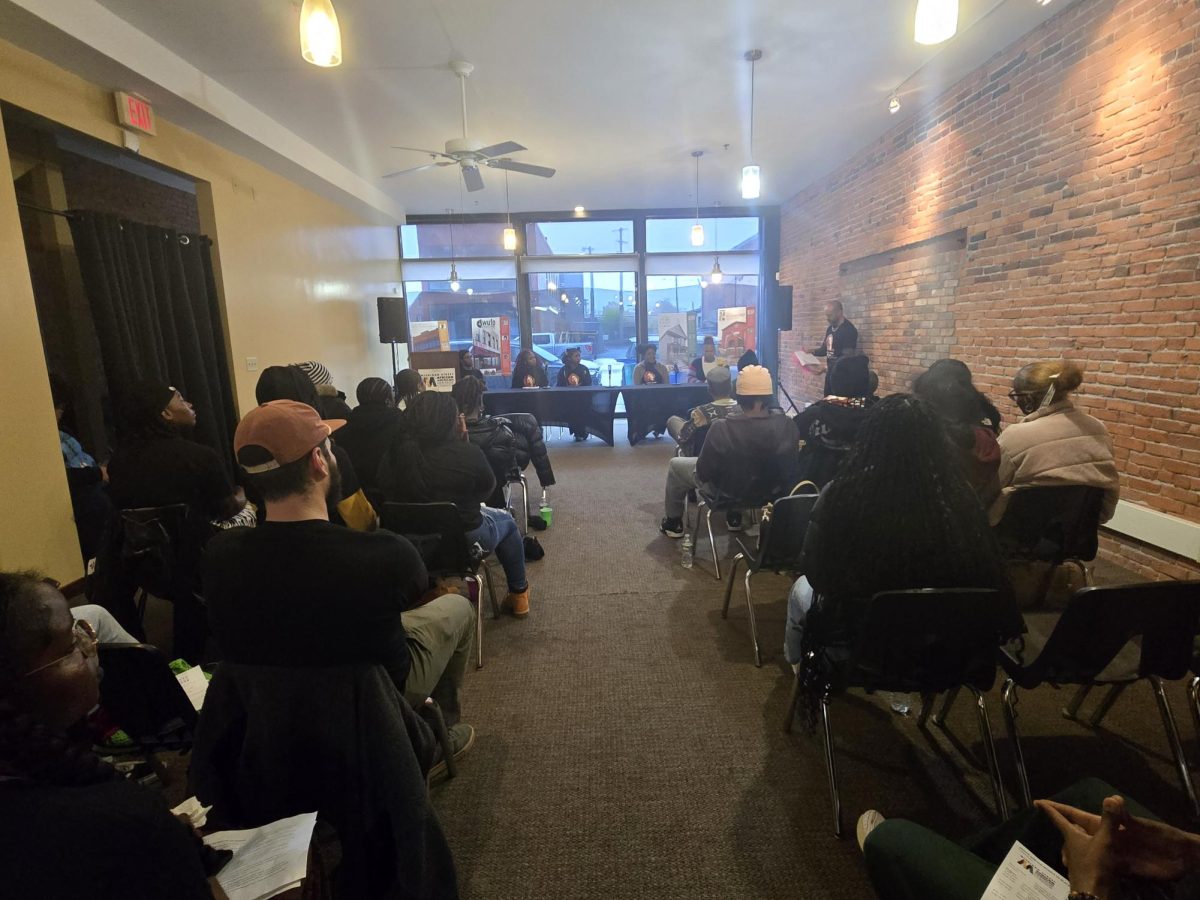Should females be treated differently by male law enforcement officers?
October 17, 2020
During the George Floyd protests in New York City, a 20-year-old woman, Dounya Zayer, was left with a concussion after being aggressively pushed to the cement by a male officer, Vincent D’Andraia, who was eventually charged with misdemeanor assault, criminal mischief, harassment and menacing.
Are males stronger than females, and if so, should women get treated differently by male law enforcement officers?
“You might be surprised, but males are generally stronger than females due to their larger size,” says Dr. Carol DeNysschen, a professor and the chair of Buffalo State College Department of Health, Nutrition, and Dietetics.
“Pound for pound, there is a very small difference in muscle strength between genders. Males generally have more muscle fibers and a bigger cross sectional muscle mass.”
Muscle mass is tied to testosterone levels.
“In general, elevated testosterone in males produces increased muscle mass and strength compared to females,” says Dr. Randal Snyder, a biology professor at Buffalo State College.
Are police officers trained to treat female and male offenders or suspects differently because of these physiological differences? According to John Reinholz, a current lecturer of criminal justice and sociology at Buffalo State College, this isn’t the case.
“As police officers, we don’t think about size or strength. It’s not part of the training that we receive when making an arrest,” the retired criminal investigator says.
However, there is an exception for pregnant females. Law enforcement would make sure that the person “being taken into custody is treated with the utmost care.” This wasn’t the case in Missouri when a Kansas City police officer was caught kneeling on a pregnant woman.
When a male officer handles a female offender or suspect, and because males are generally stronger than females, what defines excessive force?
“Police officers are generally allowed to use whatever force is necessary to make an arrest or defend themselves,” according to Nolo.
In most jurisdictions, when a jury must decide if an officer used excessive force, it is the judge who “instructs it to consider what a reasonable person with the officer’s knowledge would have deemed necessary under the circumstances.”
“The last thing in the world that I would want as a trooper or as a supervisor investigator is for force to be used,” Reinholz says. “We try to treat everybody with dignity and respect. That’s something that we’re taught from day one.”
Is there a link between aggressive behavior and males and if so, is this why male officers are caught using excessive force?
“Up front I’ll say that there are really no anatomical things that impact aggression differences,” says Dr. Dwight Hennessy, a professor and the chair of Buffalo State College Department of Psychology. “Much of this is traceable to socialization differences because aggression is evident in both boys and girls early on and begin to diverge as they are socialized differently.”
The different types of aggression that are “deemed acceptable,” according to Hennessy, vary by gender. In children, it is more socially accepted for boys to be more physically aggressive while “social and relational aggression is modeled for girls.”
A number of differences can account as to why male officers are more likely to be caught using excessive force. One variable could be, according to Reinholz, is that there are far more males than females in law enforcement.
As of 2018, women make up just 12.6 percent of law enforcement in the United States.
How does the New York State Police Department ensure that females are treated with dignity and respect upon arrest? The use of body cameras have certainly helped, according to Reinholz, as well as the presence of female officers. However, when he was a trooper, they didn’t have body cameras.
“When a male trooper is arresting a female offender we will always try to make sure that somebody is with us to observe to make sure that there are no allegations of impropriety later.”
In reality, males are generally stronger than females, but the question remains, what force is exactly “deemed necessary” when male law enforcement officers handle females?



